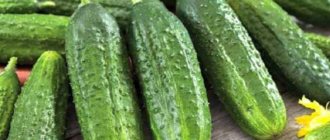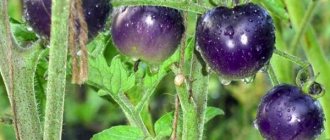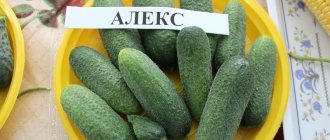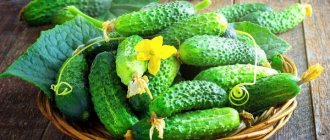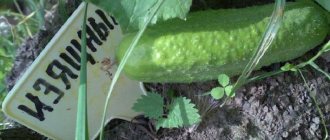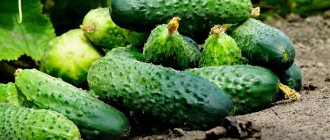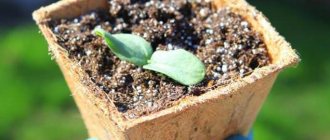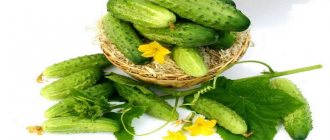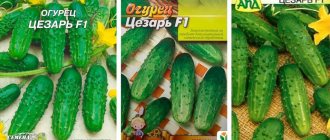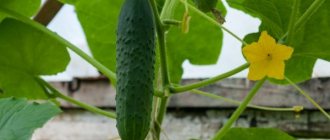Cyclantera: description
In the scientific community, the Peruvian cucumber is better known as Cyclanthera. This genus of plants belongs to the Cucurbitaceae family and includes 75 species native to Central and South America.
Origin
The widespread growth area of the Peruvian cucumber is in Peru, Brazil and Ecuador, where cyclantera has been known since ancient times and was grown by the inhabitants of the Inca state. It is this fact that explains the second name of edible cyclantera, which is most widespread in the culture of the Indians of Central and South America. After the civilizations of Central and South America ceased to exist, knowledge of edible cyclanthera was also lost for several centuries. Scientists and breeders remembered this pumpkin plant only in the middle of the 20th century after a book dedicated to the forgotten agricultural skills of the Incas was published in the United States. Among other plants cultivated by them, cyclanthera was also mentioned. From this moment on, her return to agriculture not only of the American continent, but of the whole world begins.
External characteristics
In appearance, the edible cyclantera is a herbaceous vine, whose curly, hairy, powerful stems can grow up to 5-6 m in length and branch into numerous strong shoots. The succulent foliage of the Peruvian cucumber has a bright green color and is highly decorative due to the unusual shape of the leaf blades. Each of them is divided into 5 or 7 lobed plates. Peruvian cucumber is often used for vertical gardening of recreation areas in garden plots: climbing up supporting structures such as trellises, it forms a continuous green carpet that can serve as a shelter from wind, dust, noise and bright rays of the sun.
Flowering and fruiting
The flowering period of the Peruvian cucumber begins in mid-summer and is distinguished by its long duration and splendor. At this moment, white, yellow or green flowers bloom on the shoots - their color depends on the type of plant. Due to the absence of nectaries, the mechanism of their pollination is determined by the influence of wind. The Peruvian cucumber belongs to the Cucurbitaceae family by the presence of flowers of both sexes on the same plant. Male flowers are modest in size, white in color and form cluster-shaped inflorescences. Female flowers are characterized by a larger diameter and a pleasant creamy-yellow shade of petals.
The fruit ovaries of Cyclantera edible appear as a result of pollination: there are up to 5 fruits per leaf axil, but on average, an impressive harvest can be formed on the vine - more than 250 “cucumbers”. The shape of the fruit is usually oblong, the maximum length is about 7 cm. The Peruvian cucumber is able to bear fruit even with a fairly short daylight hours, which makes it suitable for growing in central Russia. Its fruits are characterized by spontaneous opening upon reaching maturity: the fruit shell consists of two valves, which, at the moment of opening, sharply bend back, throwing the seeds over a fairly large distance. Thus, Peruvian cucumber seeds can spread naturally over an area of several square meters.
How to care
Cyclantera develops quickly and actively increases green mass. When it grows up, it is tied to a trellis.
The crop does not like excessive heat - because of this, productivity decreases. The optimal temperature for development is +20 °C.
Features of care include loosening, weeding, watering and fertilizing. Diseases and pests do not damage the plant.
To make the fruits appear faster, cut off the side and bottom shoots. If the crop is not grown for decorative purposes, the main vine is pinched at a level of 1.5 m. Then the cyclantera will stop stretching and will begin to spend energy on the formation of ovaries. Wilted and non-fruiting branches are also removed.
Watering
The soil is well moistened, but water stagnation is not allowed. The watering rate varies depending on the growth phase:
- before flowering – 3–4 l/m² once a week;
- during the flowering and fruiting period - about 10 l/m² every 3 days.
The amount of water is adjusted depending on weather conditions. If there is heavy rain in the summer, the norm is reduced.
Do not water the cyclantera with a powerful stream of water. Because of this, the soil is eroded and the root system suffers.
What should you fertilize with?
SENSATION!!
The easiest way to save gas by 25% is 50% less... Read more >>> During the growing season, plants are fed 3-5 times with mineral (nitrogen-phosphorus-potassium) and organic (mullein solution) fertilizers:
- at the beginning of flowering;
- during fruiting;
- 2–2.5 weeks before the last harvest.
Fertilizers are diluted in water according to the instructions. Water at the rate of 5–6 liters per m².
The use of infusions of various herbs that grow on or near the site is effective:
- plantain;
- nettle;
- coltsfoot;
- dandelion leaves.
The grass is crushed. 1 kg of raw material is poured into 10 liters of warm water (+50 °C), mixed and left for a day. After this, the infusion is filtered and the plants are watered with it at a rate of 3–4 liters per 1 m². This product can easily replace mullein solution.
Cyclantera: beneficial properties
Edible cyclantera: video
In taste, the fruits of edible cyclantera most resemble the cucumber familiar to domestic gardeners, however, it is characterized by the presence of notes reminiscent of sweet pepper, as well as green beans. They are often eaten fresh, for example, as part of seasonal salads. It is important to collect the fruits of the Peruvian cucumber before they become overripe - otherwise they are likely to lose their juicy and fresh taste.
The taste of Peruvian cucumber fruits when fried changes towards the predominance of shades of green asparagus beans. At the same time, connoisseurs note that the latter is inferior in taste to the Peruvian cucumber. Cyclantera fruits are stewed together with other vegetables, as well as meat, and can serve as a side dish for hot dishes. This plant is also suitable for canning: its fruits can be salted, pickled, or fermented.
The fruits of the Peruvian cucumber contain a fairly large amount of substances beneficial to the human body. Thanks to this, they can act not only as food, but also as medicine. Thus, it has been established that Peruvian cucumber can be used to combat diseases such as atherosclerosis, hypertension, and anemia. In addition, its Peruvian cucumber fruits or cyclantera promote choleretic and diuretic processes in the human body, and also improve the secretory and motor functions of the gastrointestinal tract. Eating the fruits of the Peruvian cucumber has a beneficial effect on the condition of the kidneys, cardiovascular system, liver, and also has a beneficial effect on combating such a common problem as swelling of the lower extremities.
How is this product useful?
The seeds have approximately twenty-eight to thirty different amino acids. We are talking about peptin, galacturonic acid, glycoside, bromopicrin, flavonoids, alkaloids, carbohydrate group, resin, sterols, and other components that are very necessary for humans. However, not only the fruits are good.
| Seed | Leaf, root | Fetus |
| Peruvians take tea made with cyclantera seeds as an antihypertensive to control high blood pressure (hypertension). | The leaves are suitable for decoction that reduces blood glucose levels; The decoction is also used as a hypoglycemic agent when treating diabetes mellitus. | Can be used as a diuretic. It is enough to boil the fruit in olive oil and you will get a healing painkiller and antipyretic medicine |
| It is enough to dry and grind the seeds of the cyclanthera and they will be fatal to intestinal parasites. The main thing is to follow the dosage (one gram). Also indicated for indigestion | Powdered cyclanthera is suitable as a teeth cleaning product. The powder also helps in the treatment of sore throat and colds. In the latter case, it is boiled in milk. |
Best materials of the month
- Coronaviruses: SARS-CoV-2 (COVID-19)
- Antibiotics for the prevention and treatment of COVID-19: how effective are they?
- The most common "office" diseases
- Does vodka kill coronavirus?
- How to stay alive on our roads?
Cyclantera (Peruvian cucumber): cultivation
Edible cyclantera: photo
The technology for growing cyclantera or Peruvian cucumber is not much different from the procedures that are carried out during the cultivation of ordinary cucumbers. Since this plant was traditionally cultivated in the mountainous regions of South and Central America, it is tolerant of fairly low temperatures and does not require as much heat as a regular cucumber. Too hot weather in the summer not only does not benefit this plant, but can also make significant and not always favorable changes in the process of its development. Thus, a hot July can slow down the process of ovary ripening and push back the ripening period of Peruvian cucumber fruits to the last month of summer. At the same time, the Peruvian cucumber needs a certain level of air and soil humidity.
Instructions for growing Peruvian cucumber seedlings from seeds
Since the Peruvian cucumber is resistant to low temperatures, the seeds of this crop can be sown both in open ground and in containers for seedlings.
It is recommended to begin preparing seedlings of Peruvian cucumbers or cyclanthera approximately 6 weeks before the expected date of planting the seedlings in open ground. For this purpose, in the first days of April, you need to place the seed in small containers, for example, in ordinary plastic cups filled with substrate. You can also use the bottoms of small plastic bottles cut in half. You can prepare a nutritious soil mixture yourself: just mix equal parts of garden soil and humus. It is also recommended to add coarse sand to the substrate in the same quantity as other components. To increase the nutritional value of the soil, half the mixture of charcoal and superphosphate should be added to it. The substrate should be well moistened; it is best to start preparing it in the fall - this way, the beneficial substances will have time to be evenly distributed throughout the entire volume of the soil.
Sowing seeds in cups with warm soil is done as follows: seed is placed at the rate of 2 cyclantera seeds per container, then sprinkled with a layer of earth about 2 cm thick and watered with a warm solution of low concentration potassium permanganate. After this, containers with future seedlings should be placed in a warm room and left there until the first shoots appear. As a rule, this occurs 3-4 weeks after sowing the seeds. With the appearance of sprouts, the cups need to be moved to a well-lit room with colder air - under these conditions, future seedlings will not stretch too much and will take on a neat shape. When the seedlings grow up, you should carefully examine and select the strongest specimen in each pair. It is left, and the weak sprout is cut off at the very surface of the soil.
Transplanting seedlings into open ground
You can start planting Peruvian cucumber seedlings in open ground after 5 to 6 leaves have formed on each of them. On average, this period occurs in the last two weeks of spring.
In the area chosen for growing Peruvian cucumber, you need to dig planting holes at intervals of at least 150 cm and fill them with garden soil and humus, and then water with warm water. To carefully remove the seedlings, it is recommended to cut the cups - this reduces the risk of damage to the still fragile root system of young bushes. Transplantation is carried out while maintaining the earthen coma surrounding and protecting the roots of the plant. The entire space of the hole should be filled with well-compacted soil. Then the Peruvian cucumber plantings need to be thoroughly watered with warm water. Also, do not neglect supporting structures, which are best placed in advance near each planting hole. They will provide protection for young vines from the wind and allow them to climb.
Seed sowing of Peruvian cucumber in open ground is also carried out in the second half of May.
Since the Peruvian cucumber is a self-pollinating crop, at least one pair of plants must be present in one area.
Caring for Peruvian cucumber
7 days after transplanting Peruvian cucumber seedlings into open ground, they need to be fed with an organic-based solution. In this case, the concentration of fertilizer should be very weak in order to eliminate the risk of burning the root system of a young plant. At the same time, you can begin to form Peruvian cucumber bushes, guiding their tendrils along the supporting structure.
Caring for an adult Peruvian cucumber or cyclantera plant comes down to the usual agrotechnical measures - watering, loosening the soil and removing weeds in the area with the Peruvian cucumber. Watering is carried out as the top layer of soil dries. It is recommended to periodically feed the plants depending on their needs at a particular stage of growth and development.
How to grow
Peruvian cucumber can grow in almost any soil. But to get a good harvest, the soil must be:
- breathable;
- light;
- well drained;
- fertile.
A suitable pH level is 6. It is optimal if it is sandstone or loam.
Best predecessors:
- green manure plants;
- legumes;
- tomatoes;
- cabbage;
- roots.
Cyclantera should not be planted after other pumpkin plants.
Soil preparation involves applying fertilizers:
- in the fall (during digging) - rotted manure, potassium sulfate, superphosphate;
- in spring - nitrogen-containing fertilizers.
The landing site is located in the sun. Light shading is acceptable. It is preferable to place the plant on the south side.
Cyclantera is grown in two ways:
- seedlings;
- direct sowing into the ground.
In the first case, the plants develop more actively and begin to bear fruit sooner.
Seed preparation
Large, full-bodied seeds are selected for sowing. To identify the best specimens, they are immersed in water for 10-15 minutes. Lightweight ones that usually do not germinate float to the surface. They should be removed. The seeds remaining at the bottom are removed and used for sowing.
Additionally, soaking is carried out. To do this, place a paper towel on a saucer, moisten it, and pour out the planting material. Place another moistened sheet on top and cover with a second saucer or cardboard. The room temperature should be +20...+25 °C, and the paper should be constantly damp. Germination takes about a week.
How to plant
Seeds are planted for seedlings in April. They are placed in spacious pots. The sprouts hatch quickly if optimal conditions are maintained - temperature +25...+30 °C. Then the shoots will appear on the third day. In the future, the plantings are kept at +20 ° C so that they do not stretch, but intensively develop the root system.
Seedlings are placed in open ground at the age of 35–40 days. To get powerful bushes, you should learn how to choose a seedling. Weak specimens that slow down their development are thrown away.
Planting is carried out in pre-prepared holes 40x40x40 cm. Humus and wood ash are placed at the bottom. The planting holes are watered and cyclantera bushes are transplanted into them.
At first, young shoots are covered with non-woven material so that they are not damaged by return frosts.
Direct sowing begins when the soil warms up to +14 °C at a depth of 10 cm. Seeds will not germinate in cold soil.
How to plant:
- seed sowing depth – 1.5–2 cm;
- the distance between bushes is 1.1–1.2 m.
After planting, the soil is well moistened. When the seeds sprout and 4-5 true leaves form on the shoots, they are fed with a urea solution.
Growing in a greenhouse
The greenhouse is first disinfected with a solution of copper sulfate or karbofos:
- 1 tbsp. l. each composition is diluted in 10 liters of water;
- consumption – 10 l per 10–15 m².
In the spring, the soil is prepared and brought into the greenhouse. Approximate composition:
- peat, turf soil, humus, sawdust in equal proportions;
- peat, humus, sawdust in a ratio of 3 to 1 to 1;
- the same amount of peat and humus.
Beds are formed in the greenhouse, 70-80 cm are left between rows. Then the following is added:
- complex mineral fertilizer - azophoska, nitrophoska, etc.;
- wood ash;
- dolomite flour.
The beds are dug up to the depth of a bayonet shovel and covered with plastic film for 5–10 days. After this, the seedlings are planted and covered with soil up to the cotyledon leaves.
Cyclantera edible: harvesting
Harvesting the fruits of Cyclantera edible or Peruvian cucumber should be done at the moment when their surface acquires a yellow tint. You can leave a couple of fruits in the garden to obtain seeds: their final ripening will occur in the second half of September. In order to prevent their premature opening, the fruits should be placed in paper bags or wrapped with strips of thin fabric. This way the cyclantera seeds will not scatter if the fruit suddenly opens. They are removed from the site with the arrival of the first autumn frosts. An indicator that cyclantera seeds are fully ripe and capable of sprouting is the black color of their shells.
How to harvest
In temperate latitudes, Cyclantera fruits ripen in the third ten days of August. Harvesting is carried out when the fruits grow to 3-4 cm. Large vegetables become coarse-fibered and not so pleasant to the taste. It is important not to miss the moment, because the Peruvian cucumber quickly becomes overripe.
At the end of the season, resistance to low temperatures increases, so fruiting continues until frost. The average yield of one bush is 5–6 kg.
Vegetables are stored in a cool place at +5 °C.
Cultivation of cyclantera in the middle zone
The agricultural technology for erecting cyclantera has much in common with the agricultural technology for cucumbers, but there are still differences. It is not demanding of heat, as it grows in the mountains. But at the same time, it does not tolerate cold, especially in the first half of the growing season. Doesn't like shadows. But it prefers light partial shade.
But, in general, cyclantera is unpretentious. For growth and development, a temperature of about 20°C is sufficient, although a higher temperature of 25-30°C can be considered ideal for growing. Therefore, if July turned out to be hot, you can expect fruit from it only in August.
Fruits of the cyclanthera plant close up
If the seedlings experience frosts below 0°C, they die, although they can withstand relative and short-term cold weather. Therefore, in order not to take risks, many gardeners prefer to grow Cyclantera lobes only in an annual crop and in glass greenhouses located in a sunny place or in large flower tubs on windows or verandas on the south side.
We cultivate according to the rules
Growing cyclantera is as easy as growing a cucumber. The agricultural technology of these two crops is very similar. However, there are still differences. The first of these is the Peruvian cucumber's preference for partial shade. In the open sun he suffers, in the shade he also feels quite bad. The Peruvian cucumber does not need special heat, and this is the second difference from a regular cucumber. The fact is that in its natural habitat, cyclantera chooses mountains, where, as you understand, it is never too warm. But the Peruvian cucumber does not tolerate cold very well. If the air temperature drops to minus, the plant will die. If it comes knocking in the second part of the growing season, there will still be a chance of survival. And if it’s in the first one, it’s a lost cause.
The ideal temperature for growing cyclantera is from 25 to 30 degrees Celsius. However, the Peruvian cucumber will develop and grow calmly at 20 degrees. If July is quite cool, you will not see fruits on the cyclanthus before August. But if the weather permits, you will be able to enjoy the Peruvian cucumber several weeks ahead of schedule.
Cyclantera seedlings are patient with short-term cold snaps. But if the temperature drops below the permissible minimum for a fairly long period, the plants will not survive. Therefore, most gardeners either grow Peruvian cucumber as an annual or plant it in glass greenhouses to protect it from the destructive influence of atmospheric phenomena.
Introduction to cyclanera
Cyclantera is a liana-like representative of the flora, whose shoots can grow up to five meters in length. Exotic leaf blades look like blades; they remain green and beautiful until late autumn, so they are often used for landscape gardening, creating an excellent background.
- Cyclantera flowers are small, dioecious, painted in a faded yellowish tint. Both male and female flowers are formed on one bush. The second ones appear faster, they are white, smaller, collected in inflorescences of five to seven pieces. Male flowers are larger, with a yellowish tint. most often they are solitary, but sometimes bloom in pairs.
- Cyclantera fruits reach a length of 7 cm. The width of the fruit is no more than 3 cm. In appearance, the Peruvian cucumber resembles a small bell pepper of the “Belozerka” variety - with a sharp tip. In some places, the exotic fruits are covered with thorns, which, however, are not capable of pricking, since they have a soft texture.
Initially, the skin of the cyclanthera fruit is bright green. When the “cucumbers” are fully ripe, their color turns creamy. But when they become overripe they turn yellow. In this case, the surface of the fruit becomes covered with cracks.
By the end of the season, each vine guarantees the gardener two hundred juicy fruits. Inside each Peruvian cucumber hides about ten seeds, each of which has a flattened shape on the sides.
Eating
The Peruvian cucumber tastes like pepper when raw, and like green beans when fried. The fruits are pickled, stewed, and added to vegetable salads and soups. Young ovaries are eaten raw.
Some people eat boiled young shoots. But most gardeners agree that they are completely tasteless.
Cooking recipes
The easiest way to prepare it is by frying. To make a hearty dinner, add meat to the dish.
- chicken fillet – 250–300 g;
- cyclantera – 6-7 pcs.;
- onion - 1 pc.;
- hard cheese – 50 g;
- vegetable oil;
- salt, spices.
- The onion is peeled, cut into half rings, and browned in a frying pan.
- The meat is divided into small pieces and sent to the onion.
- Cyclantera fruits are thoroughly washed, cut into 2 halves, and the seeds are removed. They are placed in a frying pan when the meat is half cooked.
- Finally, add salt and spices, sprinkle with grated cheese, and mix.
The dish is consumed warm. It's perfect for asparagus lovers.
A vitamin salad will come in handy for the summer table.
- Peruvian cucumber – 4-5 pcs.;
- Chinese cabbage – 0.3 kg;
- cucumbers – 2 pcs. medium size;
- quail eggs – 5 pcs.;
- fresh herbs - 1 large bunch;
- olive oil – 30 ml;
- a couple of drops of apple cider vinegar;
- salt.
- shred the cabbage and place it in a salad bowl;
- crushed cyclantera is placed on top;
- Next comes the line of cucumbers, which are cut into half rings;
- the greens are washed, blotted with a paper towel, chopped and added to the rest of the ingredients;
- the salad is salted, seasoned with oil and a little vinegar is added;
- The dish is mixed, placed on a plate and decorated with halves of boiled eggs.
To enjoy a delicious winter snack, Peruvian peppers should be pickled.
Components for 3 l:
- enough cyclantera to fill the jars;
- salt and sugar - 3 tbsp. l.;
- 9% vinegar – 30 ml;
- black pepper.
- Jars and lids are sterilized.
- Vegetables are washed, peeled, quartered, and placed in jars.
- The containers are filled with boiling water and left for 10 minutes.
- Pour water into a saucepan, add salt, sugar, vinegar and pepper. Bring to a boil and fill the jars again.
- The blanks are rolled up, placed upside down and insulated.
Cyclantera is an exotic garden crop, the fruits of which not only have a pleasant taste, but are also extremely beneficial for health. Its cultivation is similar to the cultivation of cucumbers. If you know the tricks of care, then at the end of the season the plant will definitely please the summer resident with a bountiful harvest.
Cyclantera (lat. Cydanthera), as a genus, includes more than 75 plant species native to South and Central America.
All species are most widespread in Brazil, Ecuador, and Peru.
